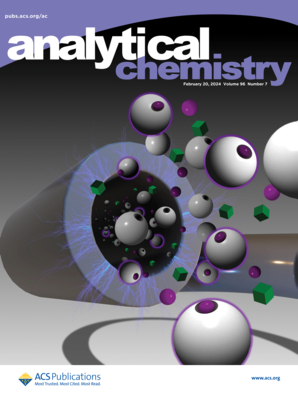SiaQuant Unveils Serum α2,3/α2,6 Sialylation Heterogeneities and Predicts Neoadjuvant Chemotherapy Response in Locally Advanced Cervical Cancer
IF 6.7
1区 化学
Q1 CHEMISTRY, ANALYTICAL
引用次数: 0
Abstract
Sialylation significantly influences tumor progression, invasion, and metastasis. Accurately characterizing sialylated N-glycopeptides (SGPs), particularly the linkage-specific analysis of α2,3,α2,6 sialic acids, remains a challenging yet crucial task in glycoproteomics. Notably, to date, there is a notable lack of detailed studies on α2,3/α2,6 sialylation in serum. Here, we present SiaQuant, an integrated strategy that employs liquid chromatography–ion mobility–tandem mass spectrometry (LC-IM-MS/MS), capitalizing on the distinctive separation of characteristic isomeric glycan fragments in ion mobility to accurately analyze serum α2,3/α2,6 sialylation patterns. It first provides proteome-wide insights into α2,3/α2,6 sialylation in serum, revealing three-dimensional heterogeneities across N-glycans, N-glycosites, and N-glycoproteins. Additionally, SiaQuant identifies potential candidate biomarkers for neoadjuvant chemotherapy (NACT) response in locally advanced cervical cancer (LACC), where the elevated level of α2,3/α2,6 sialylation was found to be associated with NACT resistance. In summary, SiaQuant offers the most comprehensive site- and linkage-specific N-glycosylation profiling of serum and shows great potential in clinical usage.

求助全文
约1分钟内获得全文
求助全文
来源期刊

Analytical Chemistry
化学-分析化学
CiteScore
12.10
自引率
12.20%
发文量
1949
审稿时长
1.4 months
期刊介绍:
Analytical Chemistry, a peer-reviewed research journal, focuses on disseminating new and original knowledge across all branches of analytical chemistry. Fundamental articles may explore general principles of chemical measurement science and need not directly address existing or potential analytical methodology. They can be entirely theoretical or report experimental results. Contributions may cover various phases of analytical operations, including sampling, bioanalysis, electrochemistry, mass spectrometry, microscale and nanoscale systems, environmental analysis, separations, spectroscopy, chemical reactions and selectivity, instrumentation, imaging, surface analysis, and data processing. Papers discussing known analytical methods should present a significant, original application of the method, a notable improvement, or results on an important analyte.
 求助内容:
求助内容: 应助结果提醒方式:
应助结果提醒方式:


